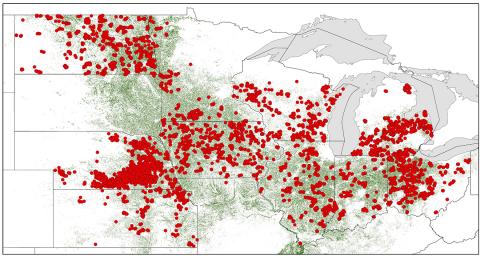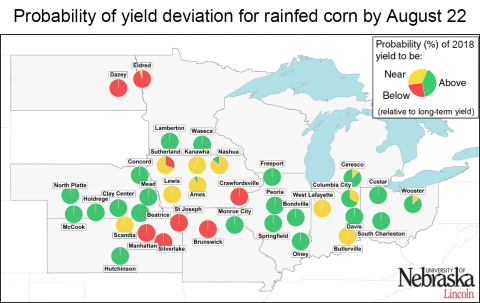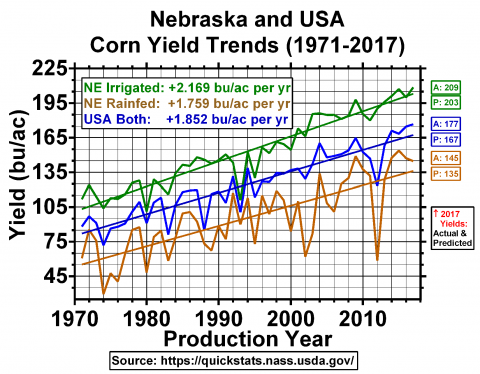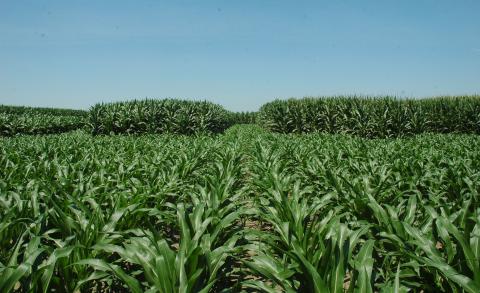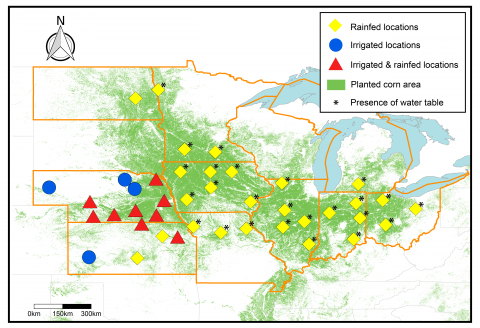Major Causes of Soybean Yield Gaps in Nebraska and 9 Other States Identified
April 15, 2019
A four year study in Nebraska and other north central states found that planting date was a leading factor explaining the gap between current soybean yield and potential yield. The gap ranged from 11% in irrigated fields in south-central Nebraska to 21% in dryland fields in eastern Nebraska.
20 Growers Sought for Soybean Yield Gap Study
February 8, 2019
The Nebraska On-Farm Research Network (NOFRN) is seeking 20 farmers to participate in a study of how to optimize soybean yields. Here's more on the practices being studied and what's needed from the growers and the university researchers.
Oct. 16 Corn Yield Forecast - End of Season Report
October 19, 2018
The end-of-season corn yield report finds that high temperatures during vegetative stages had little impact on forecasted yield potential. This is the final article in the series looking at simulated crop stages and yield forecasts for 41 locations across the US Corn Belt.
Aug. 22 Corn Yield Forecast: Shorter Crop Cycle Did Not Lead to Below-Average Yield
August 23, 2018
Corn progress and yield forecasts for 41 sites across the Corn Belt indicate near- or above-average yields for most sites. High temperatures early in the season increased the rate of corn development and led to a shorter crop cycle, but do not appear to have diminished yields.
Soybean and Corn Yield and Acreage Trends
August 15, 2018
Nebraska soybean and corn yields have steadily increased from 1971 to 2017 in both irrigated and rainfed production systems. Nebraska irrigated soybean increased at a linear linear rate of 0.68 bu/ac, and irrigated corn increased at a rate of 2.17 bu/ac.
2018 Corn Yield Forecasts: Physiological Maturity Expected Before Historical Averages
August 2, 2018
Corn growth simulations across the Corn Belt indicate early corn maturity of one to two weeks for most sites. Simulated corn yields for rainfed and irrigated sites across the region near or above normal at most sites.
2018 Corn Yield Forecasts as of July 11: Higher Temperature Led To Faster Corn Development
July 13, 2018
Corn yield forecasts and crop growth stage estimates for the US Corn Belt, based on crop modeling and local input, start up this week for 2018. Corn development is well ahead of normal, with most sites in the central and southern fringes of the Corn Belt in the silking or grain-filling stages.
2018 Corn Yield Forecasts: Approach and Interpretation of Results
June 29, 2018
Here's how the Yield Forecasting Center will be developing corn yield forecasts for 41 locations across the Corn Belt during the 2018 crop season. Modeling, using Hybrid-Maize, weather data, and on-site verification help researchers estimate yields so growers can adjust management during the season, if necessary.


